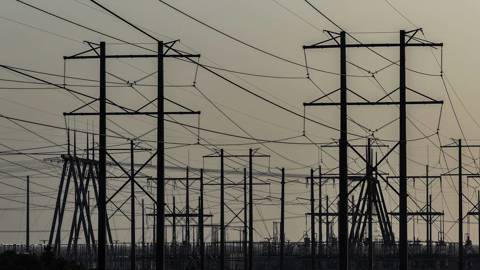Although faster technological progress can ease some of the social and political barriers to climate action, such innovation alone will not get the world all the way to net zero. To achieve that, drastic shifts in behavior and massive policy interventions will be required, including an unprecedented degree of international cooperation.
WASHINGTON, DC – Discussions about climate change contain two apparently contradictory messages. One is that it is almost impossible to decarbonize fully and fast enough to limit global warming this century to well below two degrees Celsius relative to pre-industrial levels. The other message is that, given what is at stake, such rapid decarbonization is inevitable.
Paradoxically, both statements may be true. Achieving a net-zero global economy by 2050 is technically and economically feasible with existing and emerging technologies, but it requires drastic shifts in behavior and massive policy interventions, including a degree of international cooperation that will be very difficult to attain. Although faster technological progress can ease some of the social and political barriers to climate action, such innovation alone will not get the world all the way to net zero.
The scale of the task is truly daunting. According to the United Nations Intergovernmental Panel on Climate Change, capping global warming at 1.5°C will require cutting carbon dioxide emissions by around 45% from 2010 levels by 2030, and to net zero by 2050. Doing so will require “rapid and far-reaching transitions in energy, land, urban and infrastructure (including transport and buildings), and industrial systems,” as well as CO2 removal.
Cutting CO2 emissions is only part of the task. Crucially, the world must also reduce drastically emissions of short-lived climate pollutants such as methane, in order to achieve a large reduction in Arctic warming and permafrost thawing, which threatens to cause the release of more nitrous oxide and methane.
Although over 100 countries have pledged to become carbon neutral by mid-century, global emissions have continued to increase at a rapid clip, interrupted only by the pandemic-induced recession. On pre-pandemic trends, the world is on track to exhaust its carbon budget by 2035. Despite urgent warnings from scientists, international climate negotiations have so far failed to match the level of ambition needed to meet the challenge, leading to widespread pessimism about humanity’s ability to prevent climate disaster.
What explains this coexistence between technology-based optimism and widespread alarmism? After all, the transition to net zero is both technically possible and fairly cheap in an increasing number of sectors. Renewable energy sources like solar and wind are already the lowest-cost power option in much of the world, and will become even cheaper as their adoption scales up. Of course, because these sources are intermittent, they require batteries to smooth out fluctuations. But batteries, too, are getting better and cheaper by the day, enabling the greening of transportation as well as electricity generation.
One reason for insufficient climate action to date is that switching to zero-carbon electricity and transportation entails up-front costs. True, some of these replacement costs would have to be paid anyway as cars, coal plants, and gas-fired power stations wear out or become obsolete. And for a limited number of technologies like solar, prices have fallen so much that adopting them is profitable even in the short run. More often, though, decarbonization is profitable only on a longer-term horizon in a world characterized by short-termism.
Another reason for inaction is that green transformations will have major distributional implications both within and across countries. At the national level, millions of new jobs would be created, but millions would be lost. Even if the result was a net increase in jobs over a decade, the losers would slow down the transition unless they could be adequately compensated or could quickly find other jobs.
This transition problem is most acute in developing countries, which eventually will be better off with green technologies but typically lack the long-term finance and incentives to adopt them. The only viable solution is for rich countries to subsidize the transition in developing countries – including through multilateral development banks. However, “[g]iven that domestic fiscal solidarity is already wanting, cross-border fiscal solidarity seems like a non-starter,” the economist Willem Buiter recently concluded. “Unless and until that changes,” he added, “an existential crisis of our own making will only worsen.”
Indeed, the scale of the long-term funding needed to cover the upfront costs and the difficulty of the distributional challenges call for unprecedented global coordination and domestic cohesion to make the green transition financially and politically feasible. Fortunately, although technological and political feasibility may operate on separate planes, the two are connected.
For example, cheaper green technologies lower the political cost for countries to deploy them, because it is now in their national interest to do so. That is why India is suddenly and voluntarily replacing its coal plants with renewables. The positive externalities from technological innovation at least partly offset the negative externalities posed by free-rider and coordination problems. This makes it all the more important for policymakers to ensure that poor countries have low-cost access to these technologies.
And yet while technological advances may be making ambitious climate goals increasingly plausible, they still aren’t sufficient to get us to the finish line in time. In that sense, the alarmists are right. With the current grossly insufficient Nationally Determined Contributions under the 2015 Paris climate agreement, the world would most likely be unable to keep global warming below 3°C by the end of this century, and would experience catastrophic climate events long before then.
Policymakers can resolve the apparent contradiction in the climate narrative, but only through extremely rapid action on many fronts. Proving the pessimists wrong will require the climate-oriented transition to be part of a comprehensive policy package that includes far-reaching financial transformation and focuses on distributional issues. Alongside new technology, therefore, governments must help channel massive amounts of savings into long-term investment and show unprecedented political commitment to domestic and international equity. Only then can the impossible become inevitable.











WASHINGTON, DC – Discussions about climate change contain two apparently contradictory messages. One is that it is almost impossible to decarbonize fully and fast enough to limit global warming this century to well below two degrees Celsius relative to pre-industrial levels. The other message is that, given what is at stake, such rapid decarbonization is inevitable.
Paradoxically, both statements may be true. Achieving a net-zero global economy by 2050 is technically and economically feasible with existing and emerging technologies, but it requires drastic shifts in behavior and massive policy interventions, including a degree of international cooperation that will be very difficult to attain. Although faster technological progress can ease some of the social and political barriers to climate action, such innovation alone will not get the world all the way to net zero.
The scale of the task is truly daunting. According to the United Nations Intergovernmental Panel on Climate Change, capping global warming at 1.5°C will require cutting carbon dioxide emissions by around 45% from 2010 levels by 2030, and to net zero by 2050. Doing so will require “rapid and far-reaching transitions in energy, land, urban and infrastructure (including transport and buildings), and industrial systems,” as well as CO2 removal.
Cutting CO2 emissions is only part of the task. Crucially, the world must also reduce drastically emissions of short-lived climate pollutants such as methane, in order to achieve a large reduction in Arctic warming and permafrost thawing, which threatens to cause the release of more nitrous oxide and methane.
Although over 100 countries have pledged to become carbon neutral by mid-century, global emissions have continued to increase at a rapid clip, interrupted only by the pandemic-induced recession. On pre-pandemic trends, the world is on track to exhaust its carbon budget by 2035. Despite urgent warnings from scientists, international climate negotiations have so far failed to match the level of ambition needed to meet the challenge, leading to widespread pessimism about humanity’s ability to prevent climate disaster.
What explains this coexistence between technology-based optimism and widespread alarmism? After all, the transition to net zero is both technically possible and fairly cheap in an increasing number of sectors. Renewable energy sources like solar and wind are already the lowest-cost power option in much of the world, and will become even cheaper as their adoption scales up. Of course, because these sources are intermittent, they require batteries to smooth out fluctuations. But batteries, too, are getting better and cheaper by the day, enabling the greening of transportation as well as electricity generation.
SPRING SALE: Save 40% on all new Digital or Digital Plus subscriptions
Subscribe now to gain greater access to Project Syndicate – including every commentary and our entire On Point suite of subscriber-exclusive content – starting at just $49.99.
Subscribe Now
One reason for insufficient climate action to date is that switching to zero-carbon electricity and transportation entails up-front costs. True, some of these replacement costs would have to be paid anyway as cars, coal plants, and gas-fired power stations wear out or become obsolete. And for a limited number of technologies like solar, prices have fallen so much that adopting them is profitable even in the short run. More often, though, decarbonization is profitable only on a longer-term horizon in a world characterized by short-termism.
Another reason for inaction is that green transformations will have major distributional implications both within and across countries. At the national level, millions of new jobs would be created, but millions would be lost. Even if the result was a net increase in jobs over a decade, the losers would slow down the transition unless they could be adequately compensated or could quickly find other jobs.
This transition problem is most acute in developing countries, which eventually will be better off with green technologies but typically lack the long-term finance and incentives to adopt them. The only viable solution is for rich countries to subsidize the transition in developing countries – including through multilateral development banks. However, “[g]iven that domestic fiscal solidarity is already wanting, cross-border fiscal solidarity seems like a non-starter,” the economist Willem Buiter recently concluded. “Unless and until that changes,” he added, “an existential crisis of our own making will only worsen.”
Indeed, the scale of the long-term funding needed to cover the upfront costs and the difficulty of the distributional challenges call for unprecedented global coordination and domestic cohesion to make the green transition financially and politically feasible. Fortunately, although technological and political feasibility may operate on separate planes, the two are connected.
For example, cheaper green technologies lower the political cost for countries to deploy them, because it is now in their national interest to do so. That is why India is suddenly and voluntarily replacing its coal plants with renewables. The positive externalities from technological innovation at least partly offset the negative externalities posed by free-rider and coordination problems. This makes it all the more important for policymakers to ensure that poor countries have low-cost access to these technologies.
And yet while technological advances may be making ambitious climate goals increasingly plausible, they still aren’t sufficient to get us to the finish line in time. In that sense, the alarmists are right. With the current grossly insufficient Nationally Determined Contributions under the 2015 Paris climate agreement, the world would most likely be unable to keep global warming below 3°C by the end of this century, and would experience catastrophic climate events long before then.
Policymakers can resolve the apparent contradiction in the climate narrative, but only through extremely rapid action on many fronts. Proving the pessimists wrong will require the climate-oriented transition to be part of a comprehensive policy package that includes far-reaching financial transformation and focuses on distributional issues. Alongside new technology, therefore, governments must help channel massive amounts of savings into long-term investment and show unprecedented political commitment to domestic and international equity. Only then can the impossible become inevitable.